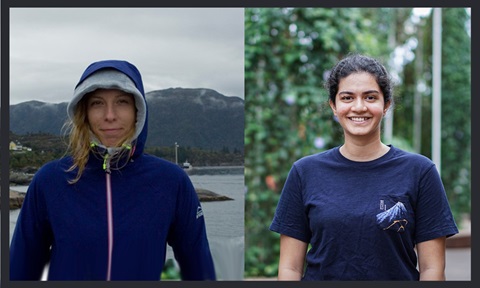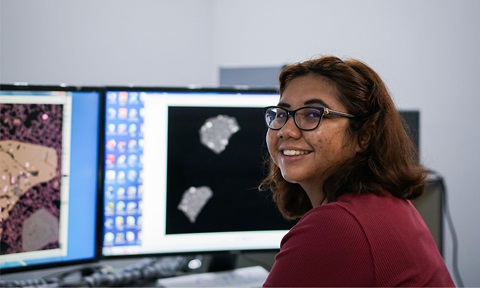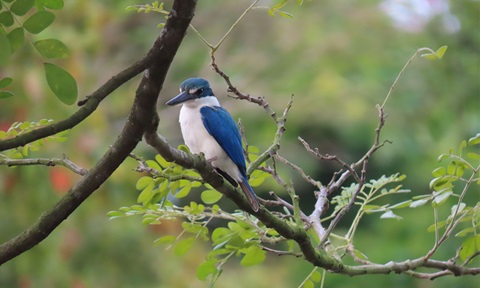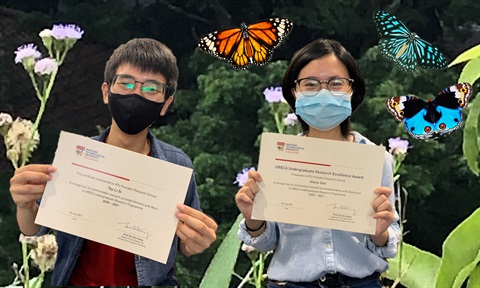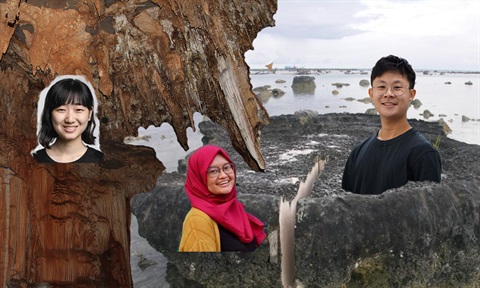AGU Outstanding Presentation Award to ASE PhD student Yu Shidong

Congratulations to ASE PhD student Yu Shidong, who received the Outstanding Student Presentation Award (OSPA) for his presentation at the AGU Fall Meeting 2021. This honour is awarded for only the most exceptional student presentations. Yu Shidong, who in the second year of his PhD, presented an iPoster titled: ‘Prediction of potassium host minerals in Earth’s deep mantle from first-principles calculations’. The poster can be viewed here.
OSPAs are awarded to promote, recognize, and reward students for quality research in Earth and space science and the ability to effectively communicate it. Judges assess and score the presentations of all students who have opted to participate in the program. The award comes with a certificate, $250 USD, and complimentary ticket to Fall Meeting 2022 Section event.
ASE Comms caught up with the awardee, Yu Shidong, to find out more:
Did you attend the AGU conference online or in person, and how did you like the conference?
I attended the conference online, and it’s my first time to attend it. I quite like it because it covers a very broad range of subjects, I believe everyone can find their topic of interested in it, and everything is well-organized with so many attendees. Personally, I find the online iPoster platform amazing because it’s very user-friendly and powerful. The templates are flexible and allow the usage of videos and even interactive modules, so it has some great advantages compared with traditional posters.
What is the topic for your PhD and what (more specifically) was your AGU presentation about?
The topic of my PhD is ‘Structure predictions of materials under extreme conditions via first-principles calculations’. My presentation at AGU was about finding new K-silicate crystal structures that might exist in Earth’s deep mantle. Some new K-silicate compounds are predicted stable at the pressure condition of the core-mantle-boundary. These compounds could act as an import heat source for the outer core convection, given that 40K contributes a large part of Radiogenic heat in Earth.
How did you become interested in geoscience and what is it about it that you find fascinating?
I became interested in geoscience after I met my supervisor Prof. Simon Redfern. He introduced me to this whole new field of research which is full of challenges and opportunities. So, I embarked on this adventure, from the very small to the very large. It is amazing to see that the observations at the atomic scale could eventually have implications on huge objects like planets. To me this field of geoscience is more related to the nature itself rather than the human industrial society, and it’s exciting to gain more understanding about the planet we live on and the universe in general. Studying things at such enormous space-time scales really remind us how small humans are in this universe, and how many mysteries are yet to be solved in the universe.
Where you did your undergraduate degree, and how did you find your supervisor Prof Redfern?
I did my undergrad in Jilin University, located in North-eastern China (A bit different from Singapore, it has 5 months covered in snow). I majored in Material science and did some research projects in computational materials when I was there.
I came to know Prof. Redfern through his previous PhD student in Cambridge, who is a JLU alumnus. Simon and I had a video chat in 2019 winter and discussed a lot about our previous research and things we could do by combining his knowledge and my skills. I found this interdisciplinary project both very challenging and intriguing. 8 months later, I came to Singapore.


.tmb-listing.jpg?Culture=en&sfvrsn=31c2d3fa_1)
